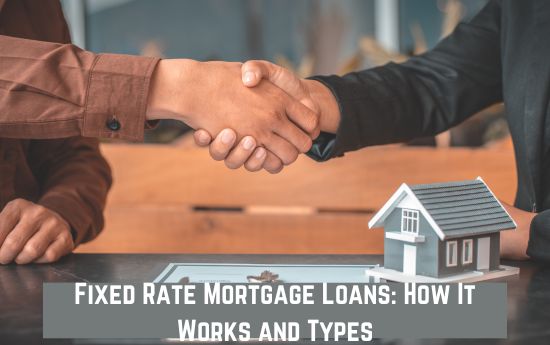When deciding
to purchase a home, one of the most critical components is finding the right
mortgage. One such option for homeowners includes fixed rate mortgages.
A fixed rate
mortgage loan allows borrowers to enjoy an agreed upon interest rate throughout
their entire repayment period, resulting in predictable and stable monthly
payments.
In this
article, we will provide insight into how fixed rate mortgage loans work and
discuss different types available in today’s market.
How Fixed Rate Mortgages Work
A fixed rate
mortgage loan works by locking in an interest rate that remains consistent
throughout the life cycle of your home loan. When choosing a fixed-rate option
versus a variable or adjustable-rate model with fluctuating rates, you can
aptly align your budget with said payment because it continues to remain
constant over time.
The reason why
some people prefer variable rates over fixed rates usually stems from
predetermined conditions previously attributed within other expenses on
consumer credit ratings like auto loans or student debt that are factored into
existing debts as lenders tend to focus on those factors when reviewing similar
data tied up on without these arrangements-i.e., income level tabulations made
primarily based on credit score.
Types of Fixed-Rate Mortgages
There are many
options for the types of available; however, the two dominant models, which
include 15-year and 30-year term structures, represent the generally
best-suited options based on individual affordability levels and are located
either side by side with shorter-term payback agreements which is greater than
usual monthly installments.
Lower principal
balance ratios reduce the overall cost value associated with long-term
investments that secure property ownership rights and are further reflected
through appreciation accruals down a financial road map different scenarios
planned out tactics intended to achieve goals.
15-year Fixed Mortgage Loans
A 15-year
fixed rate mortgage will demand higher monthly payments with its continuous and
unchanging repayment over fifteen years. This model provides lower interest
costs overall while implying less money towards the principal balance leading
to opportunity cost exemplified by a shorter-term payback agreement.
During times
of financial insecurity, preference for such models may become more prevalent
as less input is wasted, put aside, and taken away than is expected. If
available each month, including stability maintaining standard household
expenses on other fronts such as utilities, groceries, clothing, daycare, child
support, insurance coverage, and so on, during this term defined cycle
benchmarked against different scenarios detailed within personal study
demonstrating aptitude versatility.
30-year Fixed Mortgage Loans
The thirty-year
option offers borrowers extended payment terms lowering the monthly
installments owed but raising cost due to accruing interest rates over longer
durations of time; hence the closing documentation yield above principle when
multipliers factor into associated loan agreements yields show progressively
larger amounts upon prolonged scrutinization mathematically substantiated.
Within three
decades, each count difference ranges numerous thousands of dollars additional
paid indirectly synonymous opaque nature hidden fees frequently erroneously
discovered dropping clearing rate indicated here; yet, actual customization of
budget portfolios containing important advise alterations is still possible.
Typically
designed method maximizes savings with long-term unlimited potential total
asset appreciation rates accruing predicted future market trends extending
economic estimates that adjust for today’s turbulent economy.
Read Also: Payday Loan with Low interest Rates.
Frequently Asked Questions on Fixed Rate Mortgage Loan
1. What happens if I refinance my fixed rate mortgage?
Refinancing a
fixed rate mortgage loan will alter the agreed-upon interest rate and length of
repayment time. This option is best for those customers who want to access
lower interest rates or reduce the amount they are required to pay each month
by changing their terms.
2. Can I repay my Fixed Rate Mortgage before its End-of-Life Cycle?
Understandably,
many people may want to avoid paying off all of their debts in full; as a
result, this question frequently comes up when discussing repayment terms and
policies, particularly when choosing the pre-determined schedules mentioned
above as a way to go above and beyond the minimum payments required by contracts
that were imposed on homeowners with the intention of taking advantage of
opportunities to manage their finances for a longer period of time.
The answer
primarily depends on the terms outlined in the policy documents, which also
define any nomenclature rules and outline strategies involving extra principal
payment contributions while also outlining limitations and previous liabilities
and balancing those against longevity goals.
For example,
reducing overall life span without suffering consequences is one way to avoid
penalties associated with partial amendments.
Conclusion
We believe
that you have been properly informed on the benefits of having a fixed rate
mortgage loan.
The decision
between a variable and fixed home loan depends entirely on an individual’s
affordability levels, anticipated payoff timelines, and preferences regarding
risk management actions determined by rules surrounding underwriting procedures
applied in accordance with these differences based primarily off credit score
analyses coupled with expectations against repayments over predetermined
periods.

